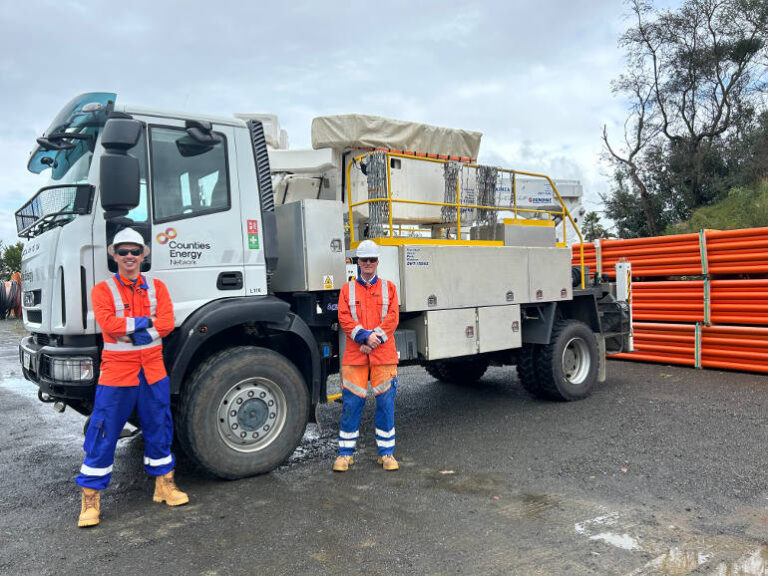“Our utes, vans and trucks tend to be higher-emitting, and driven much more regularly, so addressing adoption barriers for these vehicles will be crucial in the coming years,” is among the opening lines in the 78-page Drive Electric State of the Nation e-Mobility in New Zealand 2023 report. “Low availability and high costs of suitable light or heavy commercial transport options are hindering electric vehicle uptake in those segments.”
Drive Electric is New Zealand’s leading apolitical not-for-profit organisation advocating for electric vehicle uptake and the decarbonisation of New Zealand’s transport sector. Its members include vehicle makers BYD, LDV, Tesla, Hyundai, Lexus, Jaguar, Subaru, Polestar, Nissan, Mini, Skoda, Ford, Kia, Volkswagen and Land Rover among them; as well as energy suppliers, EV charging providers, fleet management, vehicle hire and leasing and mobility groups, and other automotive and transport suppliers.
Transport accounts for 18 percent of New Zealand’s carbon emissions and decarbonising the sector is crucial for the nation to meet its climate obligations to achieve a 41 percent reduction by 2035 and net zero emissions by 2050.
“While EVs produce lower life cycle emissions regardless of where in the world they are driven, New Zealand’s high proportion of renewable electricity grid maximises their emissions reduction potential,” said the executive summary. The country’s electricity grid is made up of 87 percent renewable energy.
Compared with a traditional internal combustion engine (ICE) truck an electric truck in NZ will over its total lifecycle produce 80 percent less emissions, and an electric car 60 percent less. The report said that maintenance costs on an EV are half those compared with an ICE vehicle.
New Zealand has government policies such as the Clean Car Programme which has been “particularly successful in driving EV uptake and cleaning up emissions from the fleet,” as well as a low-emissions transport fund and fringe benefit tax exemptions for e-bikes and e-scooters as well as funding programs for electric buses and trucks. Rebates of more than NZ$7,000 are available for purchasing electric vehicles.
“However, much more needs to be done through the implementation of the forthcoming National EV Charging Strategy,” said the report, “It is likely that hundreds of millions will need to be invested in charging infrastructure, both public and private, before the end of the decade.
“Longer term, the regulatory settings need to be right to enable electricity network business to support the connections required by decarbonisation.
“We also need to ensure there is a workforce strategy to service the growing e-mobility industry and associated infrastructure.”
Meanwhile, the report highlights, there are more plug-in models available than ever, and EV fleets are growing rapidly across the world. Globally, China leads the way in both light EV fleet numbers and model selection, with over 280 models available as of 2022, followed by Europe, with 206 models available. New EV prices have dropped and technology has advanced so that the average range has more than doubled in a decade, to an average of 480 kilometres plus from 189 kilometres in 2013.
The report notes that EVs on the road worldwide are set to surge from some 26 million in 2022, to 226 million by 2030 with more than half of all vehicles produced by then forecast to be battery electric powered.
In NZ, the Clean Car Discount and Standard has stoked model availability and sales and the country is on track to meet its target for a 30 percent light fleet by 2035. If the light fleet stays the same size, (about 4.4 million vehicles) then some 2.12 million ICE vehicles will need to be replaced with 2.12 million EVs.
The report also discusses shifts to e-mobility — small battery powered two or three-wheeler vehicles such as bikes, mopeds, scooters and motorcycles, noting it is the most electrified vehicle market segment in the world today.
The growth and opportunities in this sector too are huge. Out of the 2,556 mopeds sold last year in NZ only 613 were electric. In April, the NZ government removed FBT from e-bikes, e-scooters and public transport to encourage business to support employees to mode shift. Drive Electric is calling for that exemption to apply to mopeds as well.
The need to electrify the truck fleet is also calling. New Zealand is one of 27 governments who have pledged to achieve 100 percent zero-emission bus and truck sales by 2040.
But, at the end of last year only 141 trucks in NZ were electric, almost a quarter of them converted rubbish trucks and another 30 or so are retrofits by SEA Electric. The report notes that of the 280 heavy and mid-duty electric truck models available globally only 15 or so are presently in NZ. Like Australia, NZ is a right-hand drive market and that contributes to limited supply. It also has axle and weight limits that restrict OEMs supplying their vehicles.
Drive Electric said that to accelerate electrification of the truck fleet, policies that reduce the upfront costs of heavy vehicles and depot-based charging infrastructure, including network upgrades, and enable the development of a public heavy charging network are needed.
Meanwhile, the NZ Government’s 2023 budget announced financial incentives for zero emission trucks— $30 million for grants towards the purchase of around 500 low emissions heavy vehicles, including trucks, heavy vans and non-public transport buses.
“This announcement hopefully signifies the beginning of a rapid growth trajectory for heavy EVs,” said the report.
Here’s a link to the full report.






